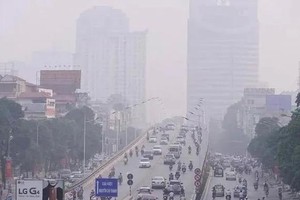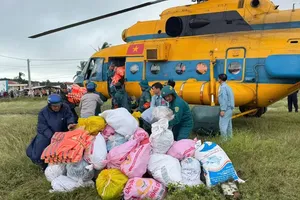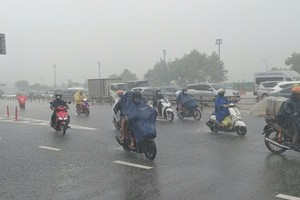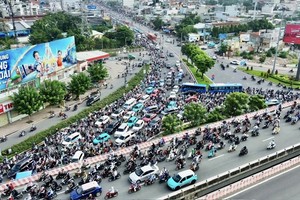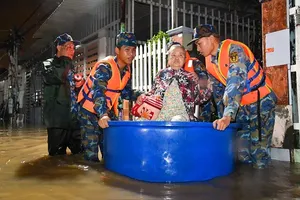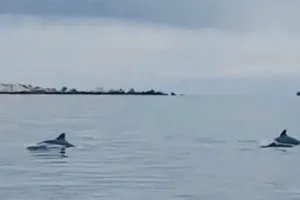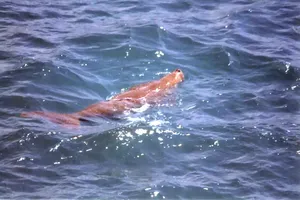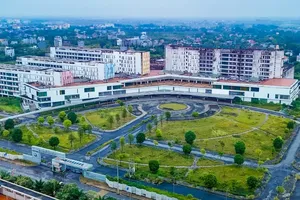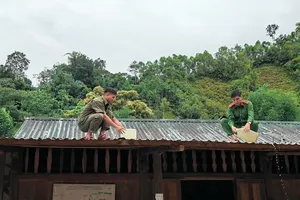In the De Gi fishing port area in Phu Cat District, SGGP Newspaper’s reporter has observed a significant accumulation of waste and garbage.
Along the embankment adjacent to the De Gi fishing port, specifically in the areas of An Quang Dong and An Quang Tay hamlets in Cat Khanh Commune, stretching for hundreds of meters, there is a multitude of household waste. At various locations, garbage accumulates from the embankment all the way to the water surface of the De Gi estuary, primarily comprising non-biodegradable plastic waste and plastic bags.
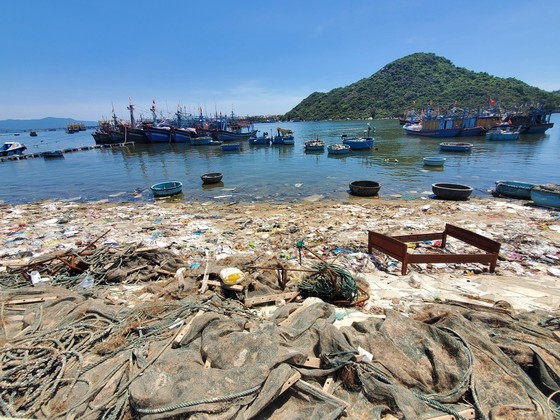 |
Along the canal route that borders the two hamlets of An Quang Dong and An Quang Tay, there are dozens of purpleback flying squid processing facilities. Surrounding rundown houses is a tremendous amount of garbage. This canal has been turned into a polluted canal filled with foul-smelling plastic waste and refuse.
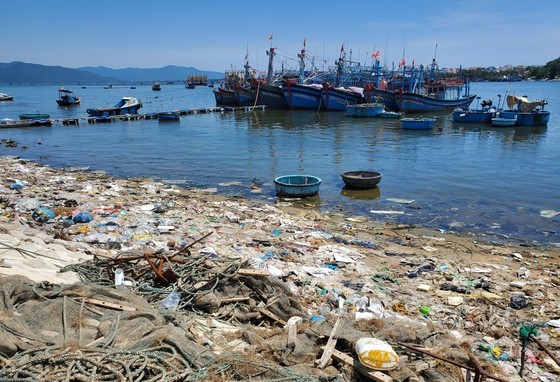 |
In the vicinity of the De Gi fishing port, numerous fishermen and workers are involved in the handling of seafood, openly discarding waste and plastic bags into the sea, even though there are garbage bins available within the port area.
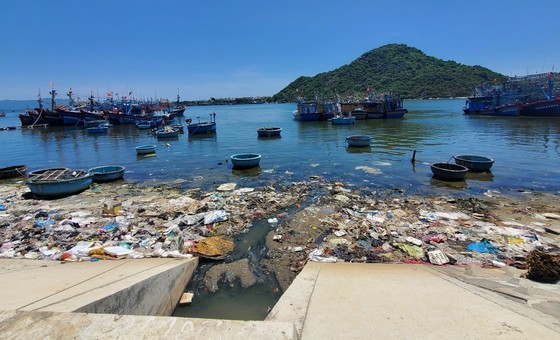 |
Based on investigations, the accumulated waste in the De Gi fishing port area predominantly consists of household waste from the residents of An Quang Dong and An Quang Tay hamlets, along with waste generated from fishing port operations and boat docking.
According to residents in An Quang Dong Hamlet, the slow garbage collection by the environmental company, which occurs only twice a week, has led to a situation where people dispose of their waste at the estuary to avoid unpleasant odors.
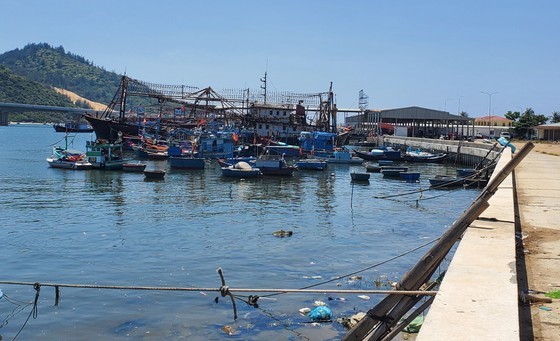 |
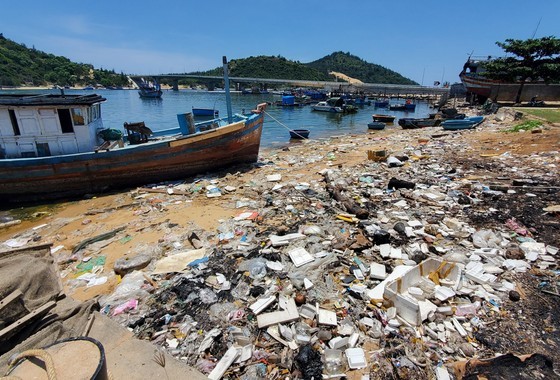 |
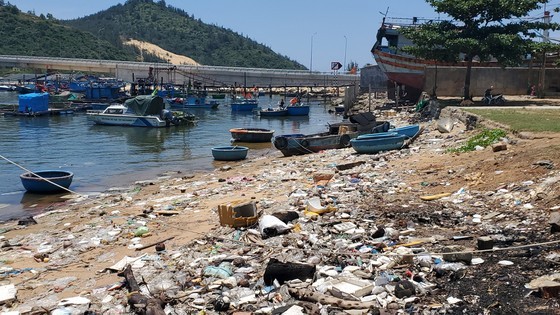 |
In a similar scenario, we have observed that along the Quy Nhon estuary area, stretching from Quy Nhon fishing port to the fishing vessel anchorage area in Hai Cang Ward in Quy Nhon City, waste is ubiquitous.
According to some residents, every day, waste from multiple sources is dumped at the estuary, drifting and dispersing across the water's surface. During the rainy season, it is further carried away into the ocean.
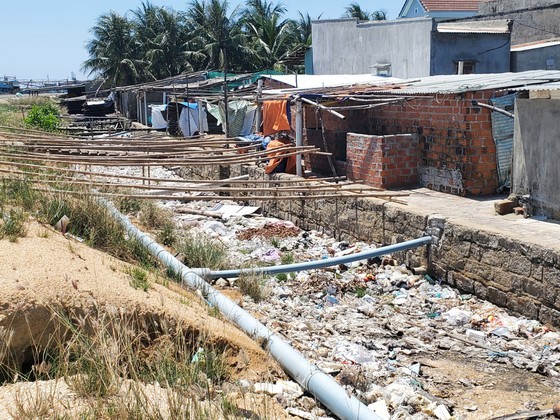 |
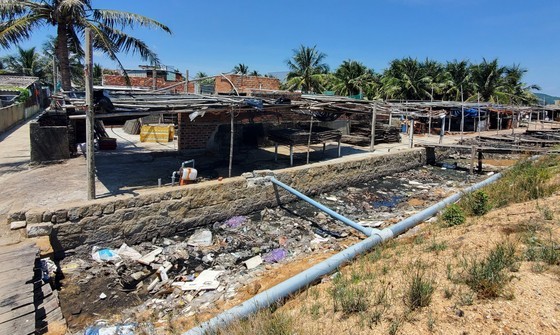 |
There are times when garbage drifts and accumulates in the anchorage areas of fishing boats, forming clusters on the water’s surface.
In response to SGGP Newspaper's inquiry about the waste pollution issue in the De Gi estuary, Mr. Nguyen Trung Hieu, Vice Chairman of the People's Committee of Cat Khanh Commune, shared that the commune has engaged a waste management company and allocated a monthly budget of VND10 million to support waste collection and alleviate the waste burden in the De Gi estuary area.
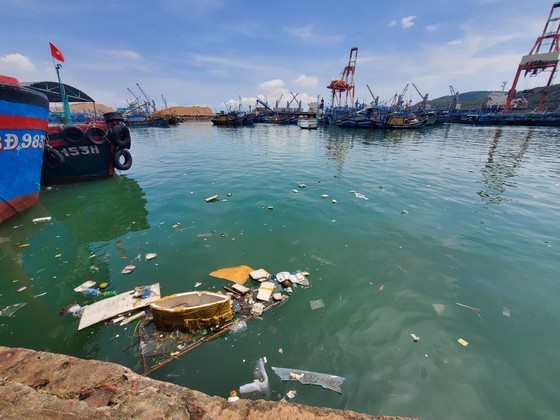 |
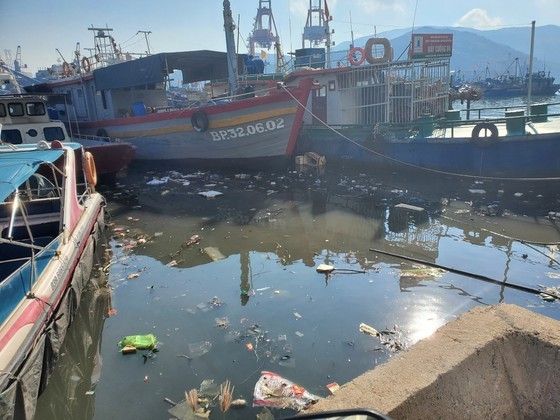 |
Furthermore, around 90 percent of the residents have agreed to contribute financially toward waste collection services. However, some households still persist in the habit of dumping waste into the sea.
Mr. Hieu added that in the upcoming period, the commune would enhance its campaign to raise awareness among residents in An Quang Dong and An Quang Tay hamlets, especially those engaged in squid processing, to prevent waste disposal into the canal and the estuary. The local authorities would continue to work closely with waste management companies to provide increased support in tackling the waste problem.
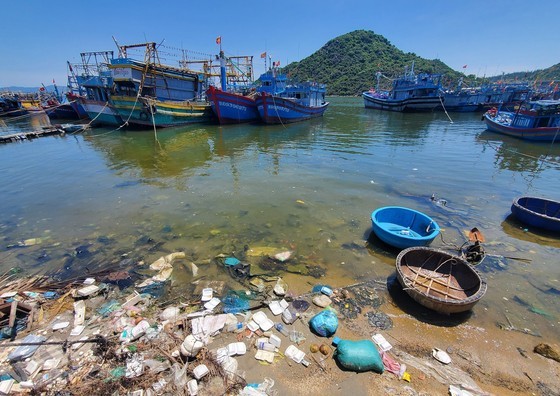 |
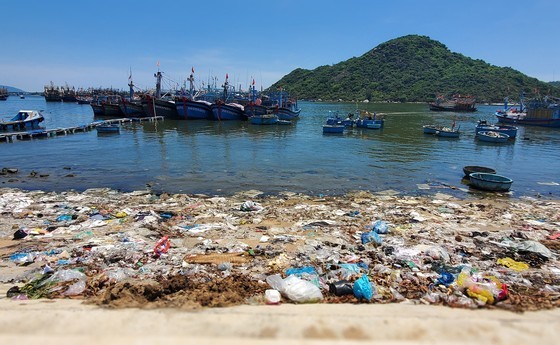 |
Regarding the squid processing facilities, the commune had submitted recommendations to the district and provincial authorities, but the establishment of a centralized designated area has not been finalized, making waste management a challenging task.
Mr. Hieu also mentioned that waste is generated from the operations of the De Gi fishing port and fishing vessels anchored inside the port. However, the De Gi fishing port primarily concentrates on waste collection within its premises, with limited collaboration with the local authorities to address and reduce waste in the surrounding waters and nearby areas.
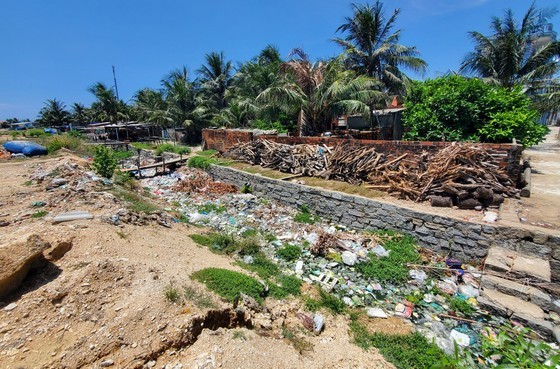 |
 |



